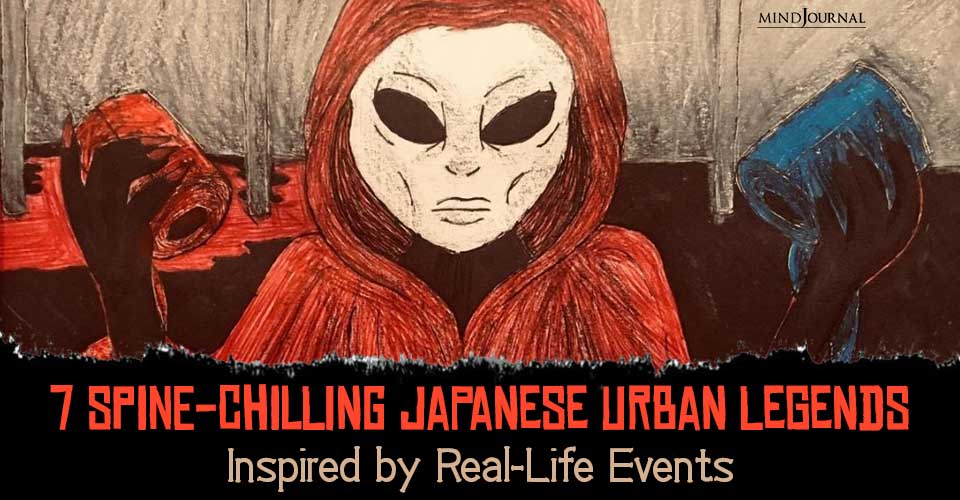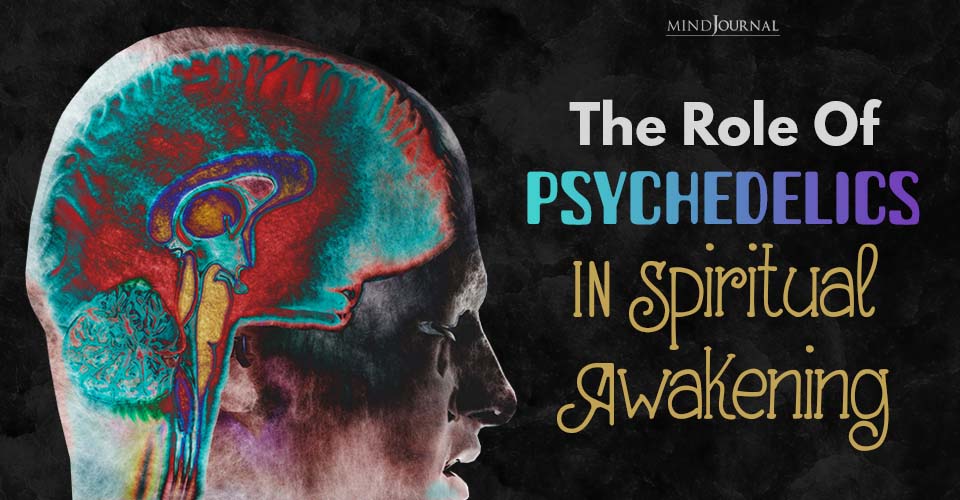From ghostly apparitions to cursed objects, the country of sunrise has many creepy Japanese urban legends that have become part of its culture throughout the years.
Delve into the macabre tales of forgotten alleyways, dolls possessed by supernatural forces beyond understanding, and the sinister spirits that call you from the other side.
They are not just tales told around campfires; they are the whispered truths that send shivers down the spine of even the most skeptical. Brace yourself for a journey into the heart of Japanese horror.
7 Scary Japanese Urban Legends Inspired by Real-Life Events
1. The Ghost of Teke Teke

The ghost of a schoolgirl who fell down a railroad track and was sliced in half by an approaching train is the central figure in the Teke Teke mythology. It is reported that her vengeful spirit haunts train stations and cities, dragging her upper body with her hands and uttering the word “teke teke” as she walks.
Whoever comes across her runs the risk of being cut in half, just as she was. This tale gained especially widespread recognition following a spate of horrifying train mishaps.
Read more here: 13 True Scary Stories Reddit Users Share That’ll Keep You Up All Night
2. Kuchisake-Onna (The Slit-Mouthed Woman)

A well-known urban legend in Japan, Kuchisake-Onna, describes a woman who wanders the streets with her mouth open from ear to ear. Legend has it that she was disfigured by her envious spouse and is now out for revenge. She asks victims, “Am I pretty?” while wearing a surgical mask.
If they respond positively, she asks again while removing her mask to display her dreadful smile. Giving a “no” or “yes” response is never safe; doing so can lead to a deadly conflict. This story originated from real sightings that sparked widespread fear in the late 1970s.
3. Aka Manto, Also known as Red Cape

Aka Manto is a malevolent Japanese spirit who appears as a handsome man wearing a mask and a red cape. He lives in the last stall of public restrooms, especially in schools.
Whenever somebody takes a seat at the washroom, he poses a single question: red or blue? The punishment for answering “red” is a slow, painful death by unstoppable bleeding from any orifice. On the other hand, if they say “blue,” they get strangled to death immediately.
After many unexplained deaths that happened within toilets during 1930s Japan, this remains one of the creepy Japanese urban legends there.
4. The Curse Of The Doll Okiku

In early 20th-century Japan, a girl named Okiku was given a beautiful doll by her brother but she fell sick and died not long after, so it became a symbol of her memory and was placed on an altar in the house.
But soon she became one of the popular Japanese urban legends because family members, including parents and siblings, noticed that the doll’s hair kept growing longer day by day, believing that the doll had been possessed by the ghost of Okiku herself.
Such haunted dolls like this can be found somewhere around Hokkaido temples even now, while their hair continue to grow even after regular cutting.
5. The Cursed Poem of Tomino’s Hell

One of the scary Japanese urban legends is a poem under a curse from the 1900s; it is known as Tomino’s Hell. This poem tells the story of Tomino, a young boy who travels through hell and is tortured there.
It is said that if you read this poem out loud, you will be cursed with bad luck, fall sick or even die. Some people began to take notice of this scary story when they found out that many people who had read aloud or recited the words were later involved in mysterious accidents and died under strange circumstances.
Even today, it remains infamous for its sinister reputation, which continues to deter anyone from reading about Tomino’s Hell.
6. Kisaragi Station’s Urban Legend

Kisaragi Station is one of the many modern yet scary Japanese urban legends spawned from an internet forum.
On a late-night train ride, a user claims to have found herself in an unfamiliar and abandoned station called Kisaragi. She asked for help on the internet but disappeared forever. This narrative reflects our anxieties about what could happen if we leave our dimension through routine activities or engage with unknown places.
7. The Cow Head Story (“Gozu”)

Gozu is said to be so scary that people die from fear when they hear it. As the story goes, a teacher was traveling on a bus with his students and told them this tale, which caused all of them to fall into comas until help arrived. Students started wailing and turned pale. They screamed, “Don’t tell us!”
According to some sources, there isn’t a complete version of this legend; however, fragments alone are enough to give anyone nightmares or induce panic attacks. It plays off mankind’s ultimate dreaded question: What if there are some things we should never know about because they’re just too terrifying?
These urban legends, which are packed with spooky facts and tied to actual incidents, still captivate and scare people. Regardless of whether you doubt or trust them, such stories are chilling evidence that darkness lurks in the shadows.
Read more here: 8 Scary Facts About Sleep That Will Haunt Your Halloween Dreams: Shhhh, Don’t Close Your Eyes!
Therefore, if you ever catch a weird sound or glimpse something in your peripheral vision; keep these things in mind. Sometimes the most frightening tales happen to be based on true events.
Tell us an urban legend or spooky story that is widely believed in your city/town, or even within your circle of friends!
Frequently Asked Questions (FAQs)
How many Japanese urban legends are there?
They are countless, but it is known that there are hundreds of these Japanese horror stories, so numerous that every region has its own set of popular Japanese urban legends.
What are Japanese urban legends called?
They call creepy Japanese urban legends “toshi densetsu” (都市伝説).
What are Japanese urban legends?
They are modern myths about scary things that may be true or false and involve ghosts, monsters, or other supernatural beings. Usually, they have some basis in historical events or local traditions too.










Leave a Reply